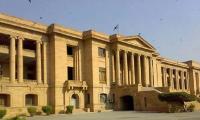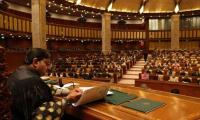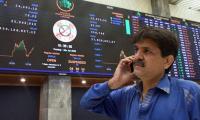ISLAMABAD: The political situation in the country is one of the main domestic risks to the economy due to uncertainty over the growing tensions between the government and opposition alliance, the Ministry of Finance warned on Monday, endangering a fragile economic recovery.
“The domestic and international scenario has begun to change which may have implications for the economic recovery,” the ministry said in its monthly Economic Update & Outlook. “…inflationary and external sectors risks are coming into action to build macroeconomic imbalances.” The ministry in its update said the recent geopolitical tensions, in particular the Ukraine crisis, is the most important external risk factor while “domestic political conditions” are building domestic risks.
“A further escalation of these risks could hamper the positive outlook for Pakistan’s economy and may also aggravate the macroeconomic imbalances.” The ministry said economic performance continues to be strong and is still on a trajectory compatible with an economic growth target of around 5 per cent in the current fiscal year. “However, the intensity of internal and external risks has still not been exactly realized which may adversely affect domestic economic activities,” it added. “Further, inflation and the current account deficit are still under pressure.”
In the period between November– February of the current fiscal year inflation was fluctuating around 12 per cent on average. “This was a marked upward shift from the earlier four months (Jul–Oct FY2022) when average inflation was 8.7 per cent.” The upward shift was mainly contributed by the persistent and significant rise in international prices, especially oil, food, and other primary commodities.
“Thus, economic recovery from the Covid-19 pandemic and the supply bottlenecks caused unprecedented surges in inflation in many parts of the world, which also spilled over into Pakistan.” The ministry said the necessary condition to bring back inflation is to limit the further month-on-month increase in prices as much as possible.” It said currently, due to increased geopolitical tensions, there are expectations about a further increase in international commodities prices. “The government is taking possible measures to contain the current pass-through of this increase into domestic consumer prices, especially through relief packages.” Still, the ministry added year-on-year inflation is expected to remain within the 9.5 to 11.5 per cent territory.
On agriculture growth, the ministry said no adverse climate shock was reported up till now and is even expected in the coming months and the agriculture sector is expected to perform up to the mark. The industrial activities are exposed to external conditions, however, Pakistan’s main export markets continue to experience demand stability. “For Jan 2022, LSM maintained the growth pace. It is expected that for Feb 2022, growth in LSM will remain moderate due to the seasonal factors.”
The trade deficit in goods and services declined considerably; from $ 4.3 billion in Jan 2022 to $ 2.6 billion in Feb 2022. Exports of goods and services that unexpectedly declined in January have resumed their upward trend in February. Imports of goods and services were at all-time highs in December and January, but declined substantially in February, helped by negative seasonal effects. In March, exports are expected to continue their upward trend, backed by the export-oriented policies that have been implemented in the recent past.
“The stabilising of the Real Effective Exchange will also help exports in keeping the rising trend. Imports will probably return to a level that is more in line with domestic economic activity and the levels of international commodity prices,” it added. “As a result, the trade balance may less deteriorate in March 2022 as well. However, geopolitical risks still persist.”
In January and February, remittance inflows declined to lower levels mainly due to negative seasonality. In March they are expected to revert to normal levels.
“Taking these factors into account, as well as its other components, the current account deficit is expected to stay well below the unsustainable levels observed during the period from Aug 2021 up to Jan 2022” it added. The ministry said the first seven months of the current fiscal year have witnessed significant pressure on fiscal accounts due to rising expenditures under grants and subsidies. In addition, PSDP spending has also witnessed a significant rise of 37 per cent.
The FBR tax collection has been able to achieve more than 65.2 per cent of its annual target during the first eight months of the ongoing fiscal year. However, the government has announced a relief package for the masses to offset the impact of increasing oil prices. “These are collectively adding risks to the fiscal sector,” the ministry said.
“Notwithstanding measures to improve tax collection and expenditure management will help in containing the fiscal deficit at a manageable level and keeping the primary balance at a sustainable level.”
Operation was carried out as part of implementation of Prime Minister’s Maritime Task Force Agenda Points
President was briefed about role of Mona Depot in breeding of horses and in meeting needs of Pakistan Army
In joint media briefing after workshop, federal minister criticised former president Arif Alvi and his party PTI
Jabbar, grade 20 officer of Secretariat Group, has been transferred to Planning Division as Joint Secretary
Chief justice expressed his commitment to continue his efforts to encourage judges and resolve their issues
Lawmakers directed that minutes of all cabinet committee meetings on USC be shared to assess past decisions







